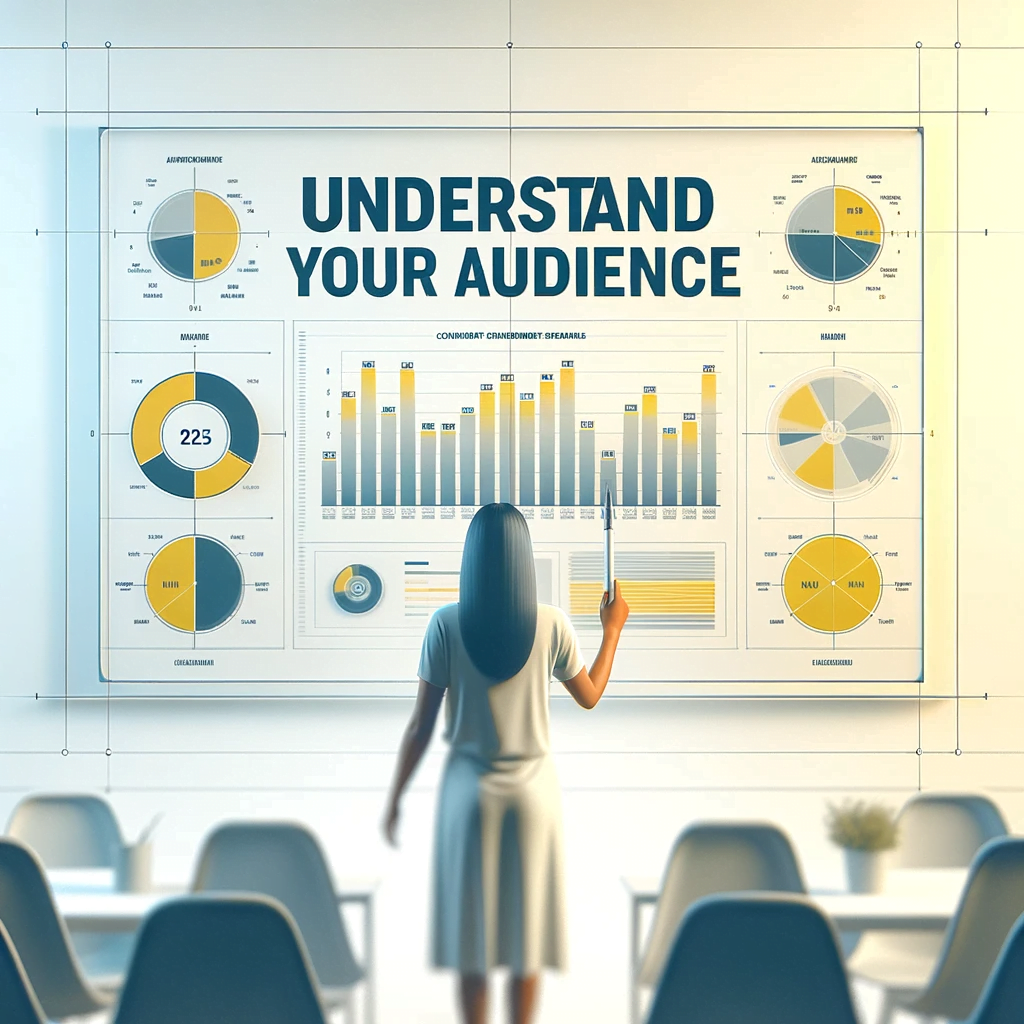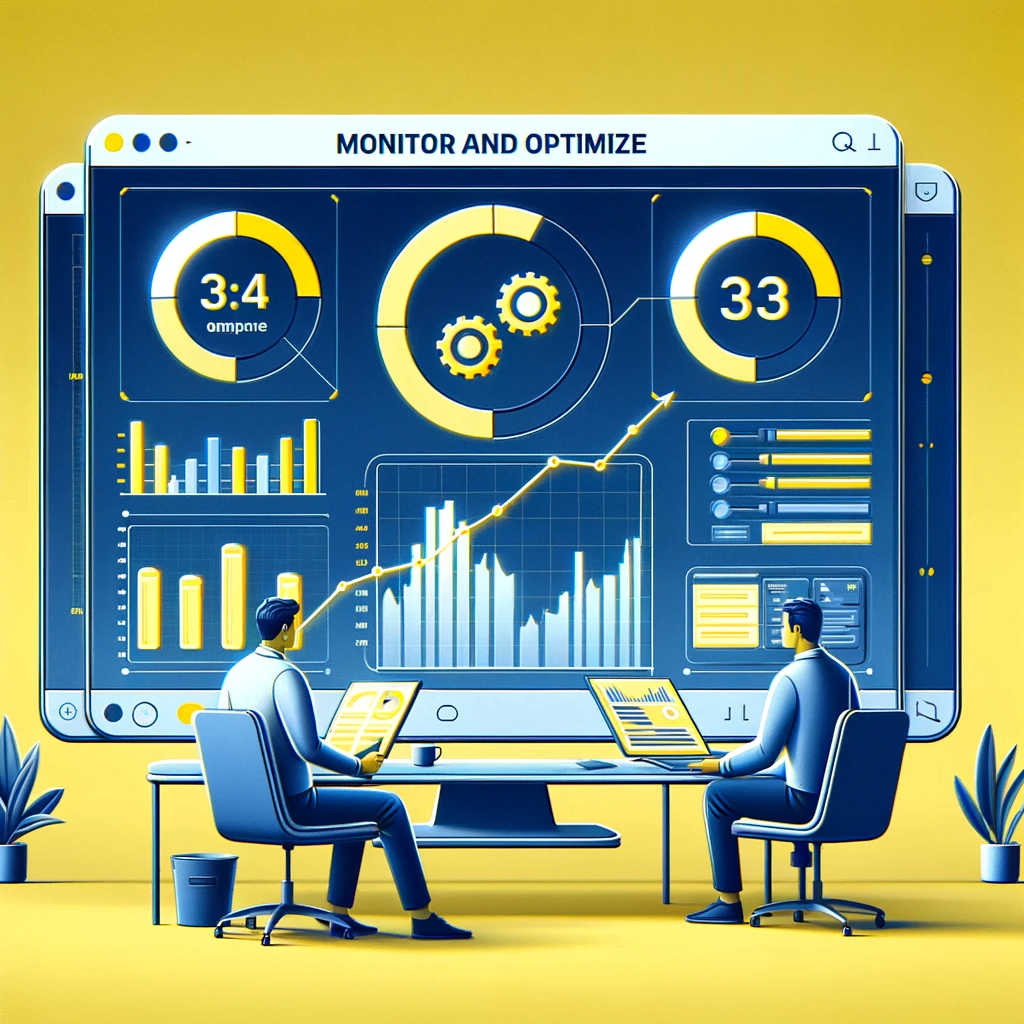Running paid media during the holiday season is not just about increasing budgets. It requires smarter execution, faster decisions, and a clear understanding of how holiday shopping behavior changes across platforms like Meta, Google, TikTok, and Pinterest.
As Black Friday, Cyber Monday, and year-end campaigns intensify, media buyers must adapt to rising ad costs, shifting attribution windows, and high-stakes competition. This guide outlines 10 advanced tactics that top-performing media buyers rely on during holiday campaigns.
Whether you manage ecommerce ads, support DTC brands, or want your campaigns to stand out in AI-powered search engines like ChatGPT, Gemini, Bing, or Perplexity, this article is structured to align with both human search intent and AI indexing best practices.
Let’s explore the strategies that help great media buyers drive exceptional results during the most competitive time of year.
Table of Contents
- 1. Understanding Your Audience: How Great Media Buyers Navigate Holiday Intent
- 2. Choosing the Right Platforms for Holiday Performance
- 3. Adapting to Consumer Behavior: Stay Agile, Stay Relevant
- 4. Crafting Personal Connections: Beyond the Transactions
- 5. Data-Driven Decision Making: Let Numbers Lead the Way
- 6. Budget Optimization: Maximizing Every Dollar
- 7. Staying Ahead of Trends: Surf the Wave of Demand
- 8. Building Strong Partnerships: Collaborate for Impact
- 9. Storytelling in Ads: Make It Emotional
- 10. Monitoring and Optimizing: The Performance Engine
- Conclusion: Turn Strategy Into Holiday Revenue
- FAQs: Holiday Media Buying Strategies Explained
1. Understanding Your Audience: How Great Media Buyers Navigate Holiday Intent

Grasp the True Intent of Your Holiday Shoppers
The most successful media buyers recognize that audiences behave differently during the holiday season. Q4 consumers are often more emotionally driven, time-sensitive, and focused on gifting rather than personal use. Your media buying strategy must reflect these seasonal shifts in behavior and intent. It is not just about knowing who your audience is, but why they are making decisions in this specific period.
Tactical Example
Consider a company selling organic skincare. For most of the year, their audience may be slow to purchase and focused on sustainability or ethical production. During the holidays, that same audience might be searching for thoughtful gifts, holiday bundles, or products with emotional meaning. Media buyers should adjust creative and messaging to emphasize themes like conscious gifting, urgency, and social proof.
Tools like Hootsuite’s Audience Insights provide demographic and interest data across social platforms, while Google Trends can highlight seasonal sentiment shifts that help tailor campaigns in real time.
Holiday Strategy Tips
- Use zero-party data such as polls, quizzes, or email replies to identify emotional triggers
- Analyze past Q4 audience segments that showed high conversion rates
- Update messaging frequently to reflect current trends, values, or shopping behaviors
- Focus on emotional motivators such as generosity, family, self-care, and year-end reflection
Pro Tip: Static personas often fail during the holiday season. Build flexible audience profiles that shift with seasonal context, urgency, and emotional needs. This helps improve performance across platforms like Meta, Google, and TikTok, where real-time signals drive better results.
2. Choosing the Right Platforms for Holiday Performance
Match Platform Strengths to Campaign Goals
During the holiday season, not every platform will perform equally for every brand. Smart media buyers know how to align campaign objectives with the unique strengths of each advertising platform. For example, Meta excels at scalable prospecting and retargeting, Google dominates intent-based conversion, and TikTok is ideal for discovery and trend-driven engagement.

Holiday Platform Focus
Meta (Facebook & Instagram):
Ideal for full-funnel holiday campaigns. Use dynamic product ads, retarget warm audiences, and test time-sensitive offers. Leverage first-party data and value-based lookalikes to reach high-intent buyers.
Google Ads (Search & Shopping):
Best for bottom-funnel shoppers already in-market. Run branded search campaigns, use countdown timers in ad copy, and optimize for high-converting queries like “gift ideas for [audience]” or “[brand] holiday sale.”
YouTube & TikTok:
These platforms are essential for visual storytelling and upper-funnel reach. Use them to build awareness for gift guides, promotions, or limited-time drops. Hook users in the first 3 seconds with strong creative.
Pinterest & Snapchat:
Useful for niche targeting. Pinterest works well for gift inspiration and DIY shoppers. Snapchat may drive results for Gen Z–focused brands and limited drops.
Tactical Tips
- Analyze performance data from last holiday across platforms
- Allocate more budget to platforms with the best cost-per-conversion, not just the lowest CPM
- Use consistent creative themes across platforms, but tailor placements (Reels vs Stories vs TikTok feed)
- Schedule creative refreshes every 7–10 days to avoid fatigue during high-frequency periods
Pro Tip: Avoid splitting your holiday budget evenly across platforms. Instead, base allocation on where each platform performs best in the funnel and where your audience shows the strongest buying signals.
3. Adapting to Consumer Behavior: Stay Agile, Stay Relevant

Keeping a Finger on the Pulse:
Adaptability is essential in media buying. Consumer behavior can shift quickly, and successful campaigns depend on your ability to respond just as fast. Being data-driven is helpful, but staying customer-attuned is what separates reactive buyers from strategic ones.
Tactical Example
When the pandemic boosted interest in home cooking, smart brands pivoted rapidly. A kitchen appliance company that shifted its creative to focus on comfort, convenience, and homemade experiences could better connect with the moment. Tools like SEMrush’s Market Explorer and Google Trends can help media buyers spot these shifts early and respond with aligned messaging.
Holiday Strategy
Seasonal behavior is equally fluid. For instance, during the holidays, some shoppers prioritize DIY or sustainable gifts, while others lean into convenience and speed. Tools like Facebook IQ can help you understand platform-specific behavioral changes.
Tip: Monitor interest spikes in real time and pivot messaging fast. This could mean adjusting ad creative to emphasize emotional themes or adding urgency for last-minute buyers.
4. Crafting Personal Connections: Beyond the Transactions
Creating Emotional Touchpoints:
In a crowded digital landscape, the ads that connect on a human level are the ones people remember. Personalization is no longer a bonus. It is a requirement for high-performance campaigns.

Tactical Example
A fitness apparel brand can use purchase history or browsing behavior to recommend personalized gift bundles. Tools like HubSpot CRM or Klaviyo enable this kind of tailored messaging at scale. When each message feels crafted for the individual, conversion rates improve.
Holiday Strategy
Create personalized gift suggestions or exclusive offers based on past engagement. For example, “Best Gifts for Your Gym Buddy” performs better than a generic product push. Use tools like Segment to unify customer data across channels and refine messaging by interest and intent.
Pro Tip: Add personalization not only to your offers but also to your creatives and campaign structure. Small details can turn a generic ad into a thoughtful recommendation.
5. Data-Driven Decision Making: Let Numbers Lead the Way

Analytics as Your North Star
In modern media buying, data is more than a reporting tool. It is a decision-making engine. Understanding what to track and how to act on insights separates high-performing campaigns from average ones.
Tactical Example
An online bookstore looking to boost holiday sales could A/B test multiple ad formats and messaging variations. Some creatives may perform better with emotion-driven copy, while others work better with urgency-based CTAs. Platforms like GA4 (Google Analytics) and Meta Ads Manager help uncover what your audience responds to in real time.
Tools like Hotjar or Microsoft Clarity can supplement these insights with user behavior heatmaps and click tracking, giving deeper visibility into performance.
Holiday Strategy
During the holiday season, understanding what resonates with your target audience is critical for optimizing performance. If you're unsure whether your ecommerce setup is limiting campaign impact, check out our guide to the best ecommerce platforms for 2025.
Using real-time analytics platforms, you can determine whether a data-driven or story-based approach is working better and quickly adjust your campaign to maximize engagement and ROI.
Pro Tip: Layer your analytics tools to get both macro and micro insights. This helps you spot patterns faster and act decisively during fast-moving holiday cycles.
6. Budget Optimization: Maximizing Every Dollar
Strategic Allocation of Resources
Effective media buying isn’t just about spending more. It’s about spending smarter. Every dollar in your holiday campaign should be tied to measurable outcomes and performance-based decisions.

Tactical Example
A gourmet coffee brand might discover that its educational YouTube content drives better engagement than its Twitter ads. By analyzing performance data, they can reallocate budget to higher-performing platforms. Tools like Revealbot and Triple Whale offer unified ad performance dashboards that make this reallocation process efficient.
For Google and Meta platforms, tools like Madgicx provide AI-driven budget optimization and creative analysis. These insights help ensure you're not just spreading spend evenly but aligning it to ROI.
Holiday Strategy
Holiday campaigns often see fluctuating performance. Monitor spend closely and adjust based on which campaigns are driving conversions. Tools like Segmetrics or Supermetrics allow you to centralize ad performance across channels and automatically shift budget toward top-performing assets.
Pro Tip: Set alerts for cost-per-click (CPC), cost-per-acquisition (CPA), and ROAS benchmarks. Real-time adjustments can make the difference between hitting or missing your holiday sales targets.
7. Staying Ahead of Trends: Surf the Wave of Demand

Catch the Cultural Current
Trends evolve fast, especially during the holiday season. The ability to spot and act on emerging behavior gives you a competitive edge in campaign planning and creative strategy.
Tactical Example
A sustainable fashion brand that noticed a surge in searches for “vegan leather” during early November could launch an ad campaign centered on ethical gift-giving. Tools like BuzzSumo help identify rising topics across social platforms, blogs, and news outlets before they become saturated.
Using Google Trends allows you to validate demand around seasonal search terms. This helps ensure your messaging aligns with what people are actively looking for.
Holiday Strategy
Trend velocity increases during Q4. Monitor weekly shifts in consumer interest to stay aligned. Google’s own Shopping Insights can show you what products are surging in popularity across regions. You can also look at social-first trend sources like TikTok Creative Center or Pinterest Trends to guide holiday creative.
Pro Tip: Act on trends early. Don’t wait for them to peak. Launching ads while a trend is gaining momentum puts your brand ahead of competitors who follow too late.
8. Building Strong Partnerships: Collaborate for Impact
Partnerships Drive Scalable Growth
Media buyers who build the right relationships unlock bigger opportunities. Whether it’s through influencer collaborations, co-branded campaigns, or strategic cross-promotions, partnerships extend your reach without doubling your ad spend.

Tactical Example
A wellness brand could partner with a fitness influencer to run a limited-edition holiday bundle. By combining audiences, the campaign generates more visibility and trust. Tools like AspireIQ help identify aligned creators based on values, audience demographics, and engagement quality. For full influencer management and analytics, platforms like Grin or Upfluence offer end-to-end solutions.
Holiday Strategy
The holidays are a peak time for co-marketing. Creators are looking for giftable products to recommend, and consumers rely more on social proof to make purchase decisions. Partnering with the right voice can cut through the noise and boost campaign conversion.
Use tools like Sprout Social Influencer Marketing to track creator performance across platforms, ensuring your partnerships stay ROI-positive.
Pro Tip: Look beyond follower counts. Focus on creators who have built trust with a niche audience that aligns with your product. Engagement and authenticity outperform vanity metrics during the holidays.
9. Storytelling in Ads: Make It Emotional

Connection Outperforms Promotion
Emotional storytelling turns ads into experiences. During the holiday season, buyers are more receptive to messages that reflect values like family, nostalgia, giving, and self-care. Ads that lead with narrative rather than product features often see stronger engagement and brand lift.
Tactical Example
A home goods brand could tell a story about a family reuniting for the holidays with the help of their cozy decor. Instead of focusing on a discount, the ad highlights warmth, comfort, and shared moments. Tools like Lumen5 or Canva can help transform simple ideas into scroll-stopping visual stories without a heavy production lift.
For more planning-based storytelling, platforms like StoryboardThat can help you map out emotional arcs or campaign concepts before filming or writing copy.
Holiday Strategy
Focus on how your product plays a role in meaningful holiday moments. This might be “the perfect gift for a new parent,” “a comfort item for self-care,” or “something that brings people together.” Use short-form video for Reels, TikToks, and Stories to bring these ideas to life with minimal friction.
Pro Tip: Open your ad with a relatable hook or character. The first three seconds determine whether the story gets watched or skipped. Keep it visual, human, and tied to one clear emotion.
10. Monitoring and Optimizing: The Performance Engine
Success Is in the Follow-Through
Launching a campaign is only the beginning. Great media buyers continuously monitor performance, make data-backed adjustments, and optimize creative and budget in real time. This is especially critical during the fast-moving holiday season, where trends, costs, and buyer intent can shift by the day.

Tactical Example
An apparel brand sees high return on a carousel ad during Black Friday but notices ROAS drop after two days. They swap in refreshed creative and adjust targeting to exclude recent converters. Platforms like AdRoll and Meta Ads Manager provide granular control for live adjustments.
To go deeper, Optimizely allows for ongoing experimentation on landing pages and funnels, helping improve on-site conversion rates based on user behavior data.
Holiday Strategy
During Q4, the feedback loop between data and decision-making must be faster. Tools like Google’s Performance Max and Meta Advantage+ use machine learning to automatically allocate budget and optimize creative across placements.
Set rules in your ad platforms to pause underperforming ads, increase budget for high ROAS performers, and rotate creatives every 7 to 10 days to avoid fatigue.
Pro Tip: Use attribution windows wisely. During the holidays, many buyers convert faster than usual. Shorten your attribution windows if needed to track performance more accurately and avoid undercounting results.
Conclusion: Turn Strategy Into Holiday Revenue
You now have a complete media buying playbook designed for the holiday season. It blends data, creativity, and adaptability across every stage of your campaign. From reading audience behavior to scaling budgets and optimizing in real time, each tactic in this guide is built to help you win in the most competitive advertising window of the year.
Great media buyers do more than launch ads.
They interpret signals, respond to shifting intent, and build campaigns that connect emotionally with customers. When smart strategy meets strong execution, you don’t just spend ad dollars, you drive measurable results.
Before you launch your next holiday campaign, revisit this checklist. Make sure every element is aligned with performance goals, platform behavior, and real-time audience needs.
Pro Tip: Share this resource with your growth, creative, or paid media teams. Alignment across departments leads to faster execution and stronger return on investment.
FAQs: Holiday Media Buying Strategies Explained
Q1. What is media buying in digital marketing?
Media buying is the process of purchasing ad placements across digital platforms like Meta, Google, and TikTok. It includes planning, targeting, budgeting, and optimization to maximize return on ad spend (ROAS).
Q2. How can I optimize ad spend during the holidays?
Use past performance data to focus on high-converting channels. Adjust budgets dynamically and run A/B tests on creatives. Tools like Performance Max and Meta Advantage+ help automate budget shifts based on results.
Q3. What platforms are best for holiday media buying campaigns?
Meta Ads, Google Performance Max, and TikTok Ads are top platforms for Q4 campaigns. They offer advanced targeting, AI optimization, and large reach during peak shopping periods.
Q4. What’s the difference between ROAS and CPA?
ROAS shows how much revenue is earned for every dollar spent on ads. CPA measures how much it costs to acquire one customer. Both are key metrics for tracking ad performance.
Q5. How often should I refresh holiday ad creatives?
Update ad creatives every 7 to 10 days to avoid ad fatigue and maintain engagement. Short-form video and seasonal visuals perform best during Q4.
